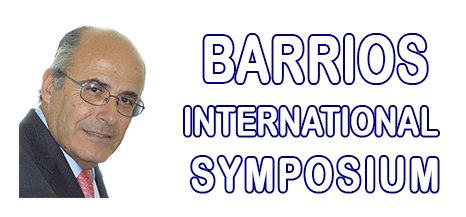ORAL
| SESSION: Non-ferrousWedAM-R1 | Barrios International Symposium on Sustainable Non-ferrous Smelting and Hydro/Electrochemical Processing (5th Intl. Symp. on Sustainable Non-ferrous Smelting and Hydro/Electrochemical Processing) |
| Wed Oct, 25 2017 | Room: Condesa II |
| Session Chairs: Christoph Sagadin; Mateus Lanna Borges de Moraes; Session Monitor: TBA |
12:30: [Non-ferrousWedAM04]
Determination of the High Temperature Melting Behaviour of Synthetic Ferronickel Slags Christoph
Sagadin1 ; Stefan
Luidold
2 ; Christoph
Wagner
3 ; Alfred
Spanring
4 ;
1Montanuniversitaet Leoben CDL-TM, Leoben, Austria;
2Montanuniversitaet Leoben, Leoben, Austria;
3RHI AG-Nonferrous Metals, Vienna, Austria;
4RHI AG, Vienna, Austria;
Paper Id: 52
[Abstract] The industrial manufacturing of ferronickel in electric furnaces produces large amounts of slag with strong acidic character and high melting points, which seriously stresses the furnace refractory. In this study, measurements by a hot stage microscope served for the determination of melting behaviour of synthetically produced ferronickel slags on magnesia as refractory material. Therefore, 13 different slags comprising the main oxides SiO2 (35 to 70 wt.-%), MgO (15 to 45 wt.-%), Fe2O3 (5 to 35 wt.-%) and Al2O3 (0 to 10 wt.-%) were melted in a graphite crucible and afterwards analysed by a hot stage microscope. The design of experiments, which was created by the statistic software MODDE, included 15 experiments with varying slag compositions as well as atmospheres. The evaluation of the test results occurred at three different characteristic states of the samples like the deformation point according to DIN 51730 and the temperatures, at which the area of residual cross section of the samples amounted to 30 respectively 40 % of the original value in dependence of their SiO2/MgO ratio and iron oxide content. Additionally, the thickness of the zone influenced by the slag was measured and evaluated. The results indicated that the deformation temperature decrease with an increasing content of Al2O3 and SiO2/MgO ratio. Furthermore, a content of 4 respectively 10 wt.-% Al2O3 resulted to the lowest temperature for 40 % residual cross section. In addition, the alumina content showed a changeable influence on the area of influenced zone of the refractory at high and low SiO2/MgO ratios.
13:00 LUNCH
| SESSION: RecyclingWedAM-R4 | 5th Intl. Symp. on Sustainable Materials Recycling Processes and Products |
| Wed Oct, 25 2017 | Room: Peninsula 4 |
| Session Chairs: Teodora Retegan; Christoph Sorger; Session Monitor: TBA |
12:00: [RecyclingWedAM03]
Pyrometallurgical Processing and Slag Analysis of Waste Electrical and Electronic Equipment Christoph
Sorger1 ; Stefan
Luidold
2 ; Stefan
Konetschnik
3 ; Tim
Haslinger
3 ;
1Montauniversitaet Leoben, Leoben, Austria;
2Montanuniversitaet Leoben, Leoben, Austria;
3, , ;
Paper Id: 59
[Abstract] Due to the increasing demand of electronic devices the amount of waste electrical and electronic equipment (WEEE) continuously rises. Therefore suitable recycling processes are essential in order to treat such 'End of Life' - products. The necessity is given on the one hand on the valuable and also critical containing metals (such as copper and the precious ones) and on the other hand on hazardous substances (like brominated flame retardants), which might be manufactured in these appliances.
Pyrometallurgical melting procedures represent one possibility for a proper recycling. A big environmental problem lies in the fact that with usage of a direct incineration the hazard of the formation of dangerous halogenated dioxins and furans is given, which can be avoided by a previous pyrolysis step or a proper post-combustion.
The product of such processes are metallic, slag and gaseous phases. The less noble elements form an oxidic slag phase. Due to the fact that this by-product might contain a lot of various elements (like iron, silicon, aluminum, calcium, etc) depending on diverse process conditions an appropriate investigation is necessary. This includes the different containing phases as well as the melting behavior in order to implicate a suitable treatment of such a slag.







